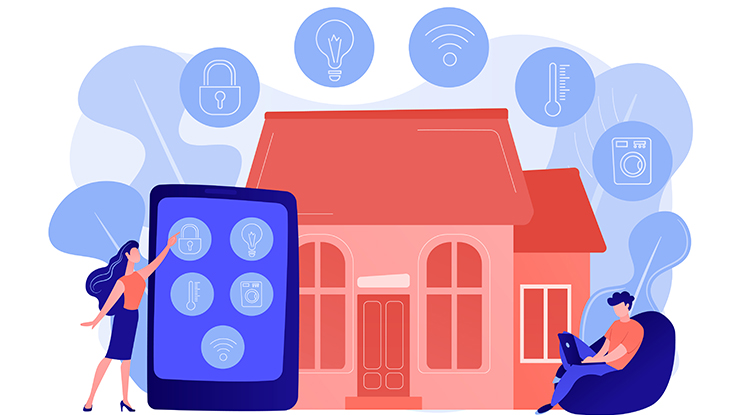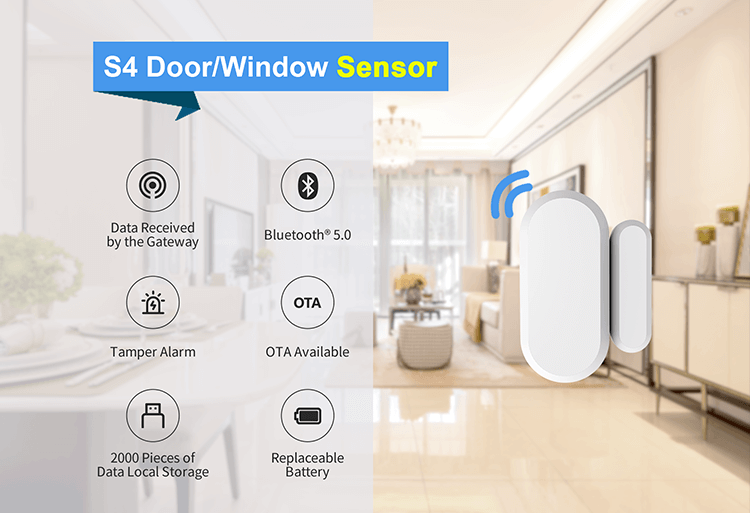IoT stands for Internet of Things. Most physical objects, until now, apart from smartphones and personal computers require IoT sensors for establishing an internet connection. We are living in an era where we use the internet on various devices to find different things and exchange information. With the advent of IoT, we can remotely collect data and operate devices from any location. For example, we can use this technology to control the humidity levels and temperature of an air conditioner with the IoT sensors. Another example is the detection of anomalies inside a home.
We can use these sensors to collect massive data about different things and conditions. In today’s guide, we will talk about these sensors and their use in the IoT applications.

IoT Sensors: Different Roles
IoT technology is helping us connect an assortment of everyday things and appliances to the net. Today, almost all units, including houses, factories, cities, office buildings need to connect to the net. There can be diverse purposes behind this need, such as a collection of the data and utilization of the information for different purposes. The need to collect data is rising greatly. Most experts believe that data collection is the key to success for every business. Therefore, IoT sensors are playing a huge role in providing solutions through IoT.
These sensors identify the external information and replace this information with signals that machines and humans can distinguish. With these sensors, we can gather data in almost any situation. These sensors are suitable in many fields, including medical care, logistics, disaster prevention, transportation, industrial, agriculture, regional businesses, and tourism, etc. The fields that require these sensors are expanding with time and the manufacturers of these sensors are coming up with new, better ideas.
Where and How We Can Use an IoT Sensor?
IoT sensors are available in various types for detecting and measuring different physical phenomena. These include pressure and heat and also the 5 human senses; smell, taste, touch, hearing, and sight. Let’s take a quick look at these types.
Physical Properties Detecting Sensors: These sensors include humidity temperature sensors, Gyro sensors, acceleration sensors, and more.
Human Sense Detection Sensors: These include thermistors, imaging sensors, sound sensors, odor sensors, and more.
The types of sensors vary with sensing objects. But when it comes to the communication interface, we can roughly categorize them into three different types. These include USB sensors, Bluetooth and Wireless sensors, and embedded sensors.
Most Common Use Cases of IoT Sensors
If we talk about the use of IoT sensors in daily services and products, these sensors are a requirement in various fields. Let’s take look at the most common examples of different use cases of these sensors.
1. Home Security Systems
A home security system allows us to monitor homes and other buildings from anywhere. You just need to set up a security device in the building. After setting up the device, you need to download the app of the security program on your smartphone. Through this app, you can remotely monitor and control the security of the building. Moreover, some home security systems also allow you to control home appliances and electronics.
In the field of home security, an array of sensors plays its part. For instance, these sensors can detect a door or a window open, measure and monitor room temperature, control light sensitivity and humidity levels, and detect motion, etc. If a criminal wants tries to enter your house by opening a door or window, the security system with door sensor will alarm you on your smartphone. This all isn’t possible without using IoT sensors.

2. Business Office Support Service
Office solutions can include the working status of electronics, such as laser printers, multifunction peripherals, and photocopiers, etc. You can connect equipment information, like parts replacement and toner levels cycle to customer service or dealers through these sensors. After connecting the equipment, sensors will detect any equipment malfunction before the user identifies. It helps distributors provide on-time after-sales service. Ultimately, it will assists manufacturers provide better maintenance efficiency and users save money at the same time.
3. Wearable Devices
A wearable device can measure burned calories, monitor the posture or location of the human, and critical signs like heart rate. These wearable devices consist of embedded sensors and collect data once you put on the wearable device. After data collection, it transmits the data to a cloud service through the internet. Then, the device accumulates and analyzes the data which enables a user to monitor health conditions. These devices are playing a great role in healthcare facilities, transportation/logistics, and building/construction industries.
In healthcare, these devices monitor the health conditions of elderly people and patients who are suffering from chronic illnesses. In the building/construction and transportation/logistics industries, these devices assist in improving workers’ safety. For example, they help in heatstroke prevention when a worker is under direct sunlight. Moreover, it also alerts drivers when sleeping.
4. Healthcare Service for Women
From the perspective of a woman’s healthcare, IoT sensors offer services, like menstrual and ovulation menstrual cycle prediction according to the accumulated data about body temperature, etc. Moreover, these sensors also play part in devices that help them get daily readings of the body temperature from digital thermometers to a smartphone.
5. Hazard Detection
IoT sensors also play an essential role in detecting the intensity of the damage from a disaster, such as an earthquake. The damage level varies from one building to another, depending on their construction and ground conditions. So, we have devices that detect hazards and these devices use these sensors for detection purposes.
Final Words
IoT sensors have become an essential thing in this modern era for various devices of everyday use. They are suitable for various use cases in different fields, including healthcare, logistics, transportation, home security, and industrial, etc. IoT systems and devices, such as home security systems and smart windows and doors, etc. are not complete without these sensors. Therefore, the Internet of Things sensors are now the backbone of various domestic and commercial devices.
Minew provides a variety of IoT sensors for different applications. With global certification, Minew’s IoT sensors deliver trustworthy service and performance, promoting your IoT projects at an affordable cost. If you are looking for a cost-effective IoT sensor for detecting temperature, humidity, vibration, infrared ray, etc., Minew maybe your future partner. Should any questions, leave us a comment below.
 Chat now
Chat now